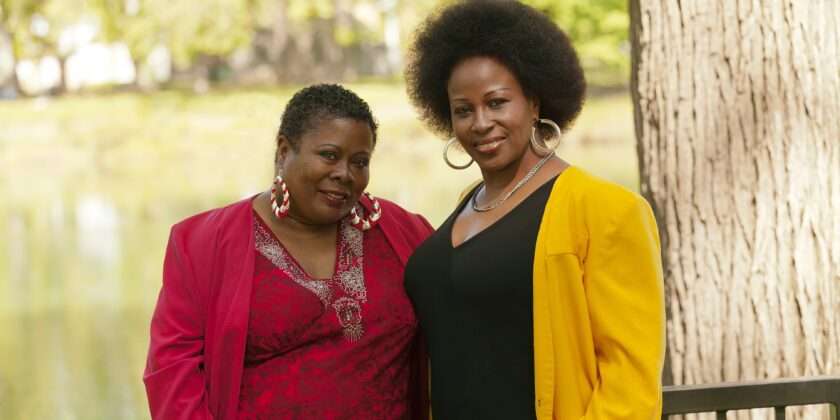Uterine fibroids are one of the most common complaints Jay Harold has heard over the 25 years as a pharmacist. Let’s discuss Uterine fibroids risk factors, who gets Uterine fibroids, and treatment options.
Uterine fibroids1 are the most common noncancerous tumors in women of childbearing age. Fibroids are made of muscle cells and other tissues that grow in and around the wall of the uterus, or womb. The cause of fibroids is unknown. Risk factors include being African-American or being overweight. The symptoms of fibroids include:
- Heavy or painful periods or bleeding between periods.
- Feeling “full” in the lower abdomen.
- Urinating often.
- Pain during sex.
- Lower back pain.
- Reproductive problems, such as infertility, multiple miscarriages, or early labor.
But some women will have no symptoms. That is why it is important to see your health care provider for a routine exam.
- Most American women will develop fibroids at some point in their lives. One study2 found that, by age 50, 70 percent of whites and 80 percent of African Americans had fibroids. In many cases, fibroids are believed not to cause symptoms, and in such cases, women may be unaware they have them.
Who gets Fibroids?
There are factors3 that can increase a woman’s risk of developing fibroids.
- Age. Fibroids become more common as women age, especially during the 30s and 40s through menopause. After menopause, fibroids usually shrink.
- Family history. Having a family member with fibroids increases your risk. If a woman’s mother had fibroids, her risk of having them is about three times higher than average.
- Ethnic origin. African-American women are more likely to develop fibroids than white women.
- Obesity. Women who are overweight are at higher risk for fibroids. For very heavy women, the risk is two to three times greater than average.
- Eating habits. Eating a lot of red meat (e.g., beef) and ham is linked with a higher risk of fibroids. Eating plenty of green vegetables seems to protect women from developing fibroids.
Can fibroids turn into cancer?
Fibroids are almost always benign (not cancerous). Rarely (less than one in 1,000) a cancerous fibroid will occur. This is called leiomyosarcoma. Doctors think that these cancers do not arise from an already-existing fibroid. Having fibroids does not increase the risk of developing a cancerous fibroid. Having fibroids also does not increase a woman’s chances of getting other forms of cancer in the uterus.
How are fibroids treated?
Most women with fibroids do not have any symptoms. For women who do have symptoms, there are treatments that can help. Talk with your doctor about the best way to treat your fibroids. She or he will consider many things before helping you choose a treatment. Some of these things include:
- Whether or not you are having symptoms from the fibroids
- If you might want to become pregnant in the future
- The size of the fibroids
- The location of the fibroids
- Your age and how close to menopause you might be
If you have fibroids but do not have any symptoms, you may not need treatment. Your doctor will check during your regular exams to see if they have grown.
Medications
If you have fibroids and have mild symptoms, your doctor may suggest taking medication. Over-the-counter drugs such as ibuprofen or acetaminophen can be used for mild pain. If you have heavy bleeding during your period, taking an iron supplement can keep you from getting anemia or correct it if you already are anemic.
Several drugs commonly used for birth control can be prescribed to help control symptoms of fibroids. Low-dose birth control pills do not make fibroids grow and can help control heavy bleeding. The same is true of progesterone-like injections (e.g., Depo-Provera®). An IUD (intrauterine device) called Mirena® contains a small amount of progesterone-like medication, which can be used to control heavy bleeding as well as for birth control.
Other drugs used to treat fibroids are “gonadotropin releasing hormone agonists” (GnRHa). The one most commonly used is Lupron®. These drugs, given by injection, nasal spray, or implanted, can shrink your fibroids. Sometimes they are used before surgery to make fibroids easier to remove. Side effects of GnRHas can include hot flashes, depression, not being able to sleep, decreased sex drive, and joint pain. Most women tolerate GnRHas quite well. Most women do not get a period when taking GnRHas. This can be a significant relief to women who have heavy bleeding. It also allows women with anemia to recover to a normal blood count. GnRHas can cause bone thinning, so their use is generally limited to six months or less. These drugs also are very expensive, and some insurance companies will cover only some or none of the cost. GnRHas offer temporary relief from the symptoms of fibroids; once you stop taking the drugs, the fibroids often grow back quickly.
Surgery
If you have fibroids with moderate or severe symptoms, surgery may be the best way to treat them. Here are the options:
- Myomectomy – Surgery to remove fibroids without taking out the healthy tissue of the uterus. It is best for women who wish to have children after treatment for their fibroids or who wish to keep their uterus for other reasons. You can become pregnant after myomectomy. But if your fibroids were imbedded deeply in the uterus, you might need a cesarean section to deliver. Myomectomy can be performed in many ways. It can be major surgery (involving cutting into the abdomen) or performed with laparoscopy or hysteroscopy. The type of surgery that can be done depends on the type, size, and location of the fibroids. After myomectomy new fibroids can grow and cause trouble later. All of the possible risks of surgery are true for myomectomy. The risks depend on how extensive the surgery is.
- Hysterectomy – Surgery to remove the uterus. This surgery is the only sure way to cure uterine fibroids. Fibroids are the most common reason that hysterectomy is performed. This surgery is used when a woman’s fibroids are large, if she has heavy bleeding, is either near or past menopause, or does not want children. If the fibroids are large, a woman may need a hysterectomy that involves cutting into the abdomen to remove the uterus. If the fibroids are smaller, the doctor may be able to reach the uterus through the vagina, instead of making a cut in the abdomen. In some cases, hysterectomy can be performed through the laparoscope. Removal of the ovaries and the cervix at the time of hysterectomy is usually optional. Women whose ovaries are not removed do not go into menopause at the time of hysterectomy. Hysterectomy is a major surgery. Although hysterectomy is usually quite safe, it does carry a significant risk of complications. Recovery from hysterectomy usually takes several weeks.
- Endometrial ablation – The lining of the uterus is removed or destroyed to control very heavy bleeding. This can be done with laser, wire loops, boiling water, electric current, microwaves, freezing, and other methods. This procedure usually is considered minor surgery. It can be done on an outpatient basis or even in a doctor’s office. Complications can occur but are uncommon with most of the methods. Most people recover quickly. About half of women who have this procedure have no more menstrual bleeding. About three in 10 women have much lighter bleeding. But, a woman cannot have children after this surgery.
- Myolysis – A needle is inserted into the fibroids, usually guided by laparoscopy, and electric current or freezing is used to destroy the fibroids.
- Uterine Fibroid Embolization (UFE), or Uterine Artery Embolization (UAE) – A thin tube is a thread into the blood vessels that supply blood to the fibroid. Then, tiny plastic or gel particles are injected into the blood vessels. This blocks the blood supply to the fibroid, causing it to shrink. UFE can be an outpatient or inpatient procedure. Complications, including early menopause, are uncommon but can occur. Studies suggest fibroids are not likely to grow back after UFE, but more long-term research is needed. Not all fibroids can be treated with UFE.

-
- Have fibroids that are causing heavy bleeding
- Have fibroids that are causing pain or pressing on the bladder or rectum
- Don’t want to have a hysterectomy
- Don’t want to have children in the future
Uterine fibroids have caused tremendous problems for women over the years. Being aware of the risk factors and symptoms of fibroids will reduce the pain and suffering.
Enjoyed this post? Share it and read more here. Questions? “Ask the Pharmacist a Question!” Jay Harold is always looking out for your health and wealth.
Please take this advice of Muhammad Ali and give back to others. “Service to others is the rent you pay for your room here on earth.” ~ Muhammad Ali




